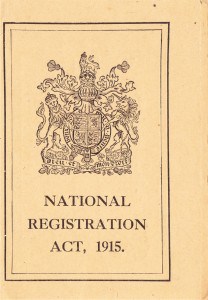Not everyone was committed to the war. Labour activists felt that the working men of Britain had no quarrel with the working men of Germany who would end up fighting. Local Quakers put up posters calling for peace. Others complained about aggressive recruitment methods and on occasion speakers were heckled. With military set-backs and casualties filling the papers in early 1915 some local men were desperate to do their bit. Others faced battles with their consciences.
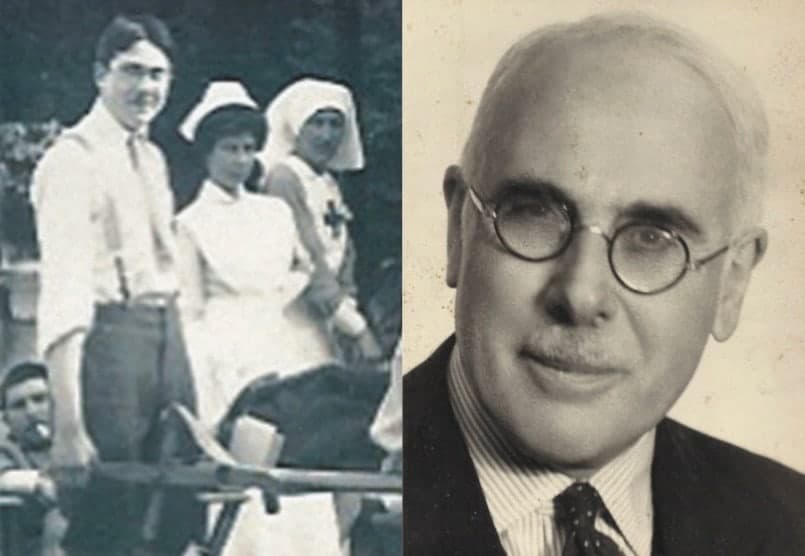
Henry Michael Gordon-Clark of Mickleham Hall had been rejected by the army for poor eyesight. He went up to Oxford – now the preserve of those unfit to fight. By the end of 1914, Henry Michael Gordon Clark had lost 3 cousins to the war: John Lee-Steere of Jayes Park, Ockley, and the Van Neck brothers, Charles and Philip, who died within days of one another. A close friend from Mickleham, Tempest Crabbe, was killed in 1915. But like many who suffered losses he wanted to do his bit to win a war that had cost three of his cousins their lives by the end of 1914. He was overjoyed when he was able to join a Red Cross hospital in Chaumont, France as an orderly in May 1915.
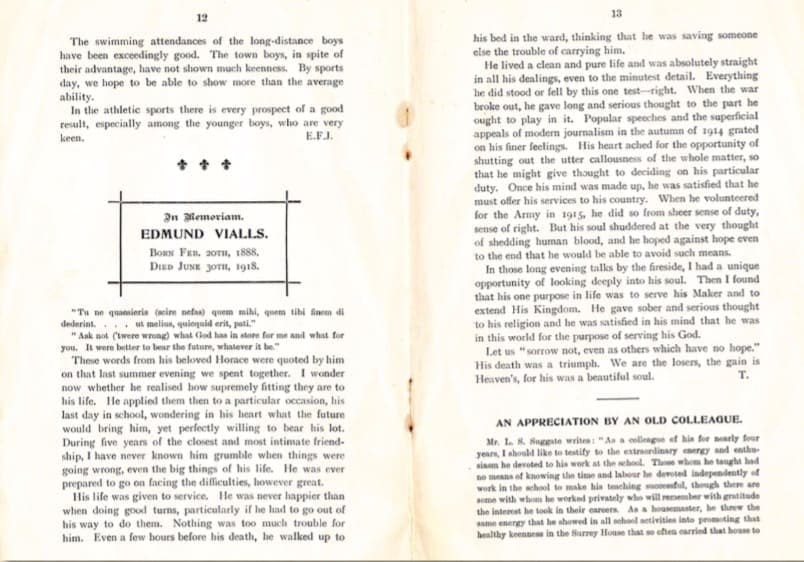
Others faced different dilemmas. Edmund Vialls, schoolmaster at Dorking High School, was opposed to war and unsure whether he could kill. He agonised about enlisting in the face of lists of the dead in the papers. But by 1915 he was convinced of his duty and joined up, still hoping to avoid the spilling of blood. Local Quakers, traditionally opposed to physical violence, faced similar dilemmas. The obituary highlights the moral and religious questions facing those who were not moved by unquestioning patriotism.
Registration was brought in by the National Registration Act 1915. It created a register of all persons, male and female, between the ages of 15 and 65 who were not members of the services. It was a precursor to conscription in creating manpower statistics that revealed the number of men still available to fight. This enabled the authorities to determine which groups should be targeted for recruitment (and later conscription) and which should be retained in civil employment. Dorking Urban District Council set up a three man committee to run the scheme locally.

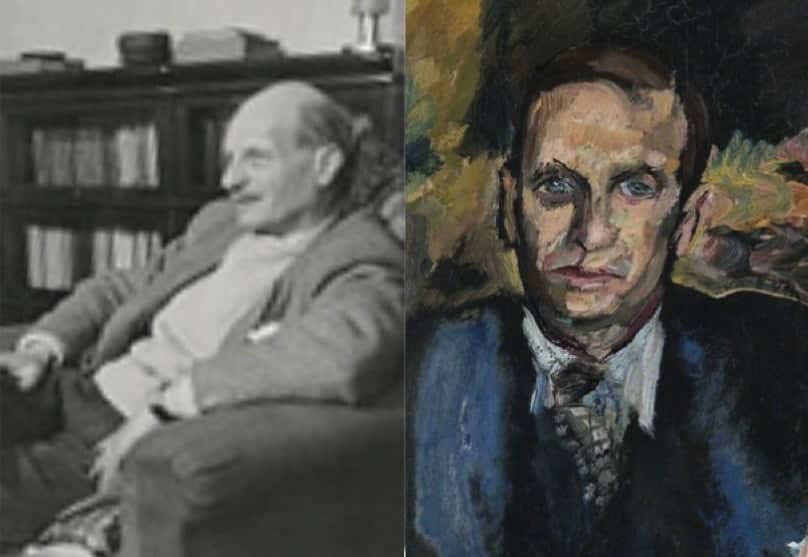
The poet Robert C Trevelyan of The Shiffolds in Holmbury St Mary was a Quaker (a member of the Religious Society of Friends). The brother of the historian GM Trevelyan, he had been a school-friend of fellow opponent of the war, Frederick Pethick-Lawrence of Holmwood. In December 1915 the prominent anti-war campaigner, mathematician and philosopher, Bertrand Russell, stayed with him in Holmbury. When conscription was introduced in 1916 Trevelyan sheltered fellow poet John Rodker when he refused to be conscripted and went on the run as a conscientious objector. Rodker was eventually caught in April 1917 and imprisoned in Dartmoor.
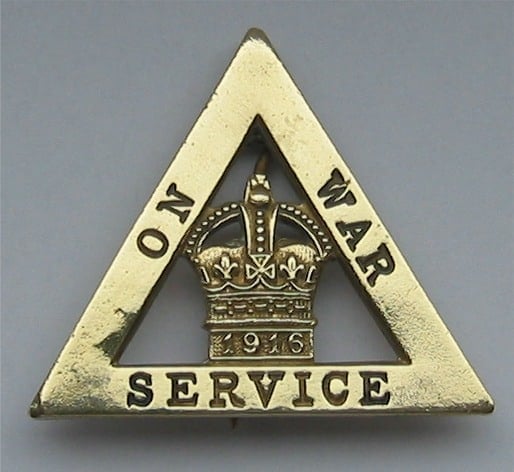
Badges were issued to indicate that the wearer was on essential service to prevent men of military age being questioned about why they had not joined up.

The certificate was issued to William Henry Dinnage who was working at the timber yard near Dorking Station.
Newspapers, parishes and schools published lists of those who had joined up to encourage (and shame) those who had not. The leader of the town council pleaded that the town’s enlistment figures should not be bettered by Reigate’s. The warfare of 1915 called for more heavy artillery, and more men to follow up initial attacks. But by the end of 1915 it was clear that voluntary enlistment could not be relied upon to provide those men. National Registration was introduced in the hope of boosting enlistment – and to provide evidence of who was available to serve. Conscription would be introduced the following year.
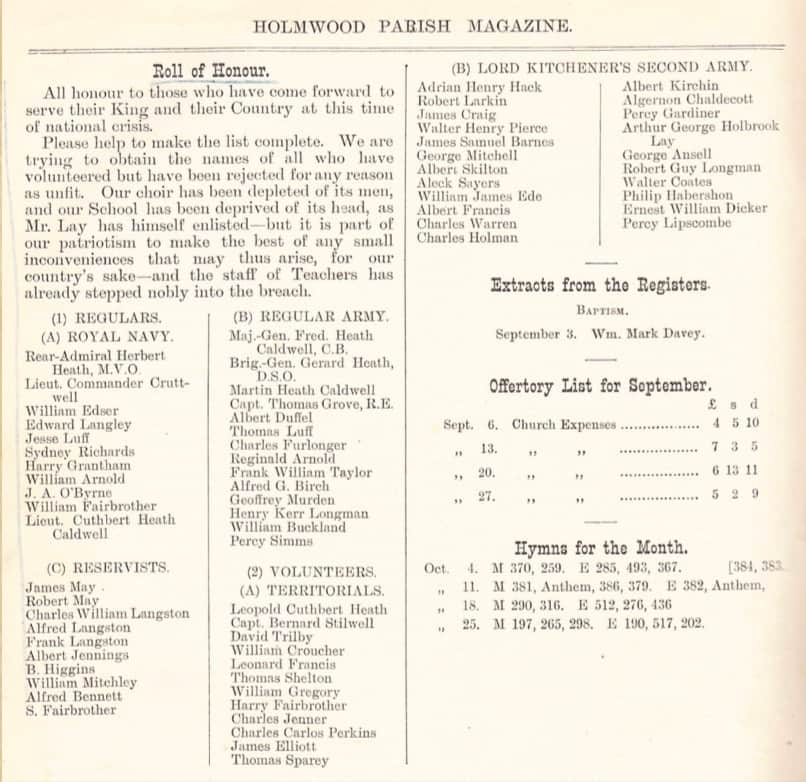
Holmwood Parish magazine publishes a ‘Roll of Honour; of those serving in the forces. Parish compared their records: ‘Our list is quite a good one,’ reported Reverend Bird of Newdigate in June 1915, reporting 62 men serving and three killed, ‘though there are parishes with a smaller population which beat us’.

The white feather became a symbol of cowardice and was often given to men who failed to enlist. Its origins go back to colonial wars.
Last : A Garrison Town
Next : Dorking Friends in Action

